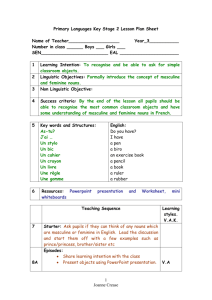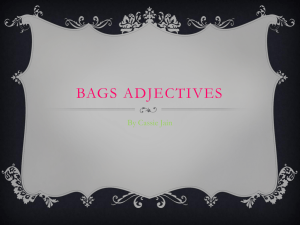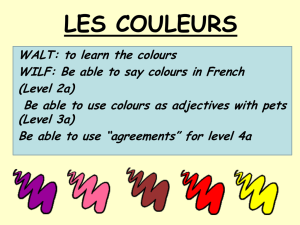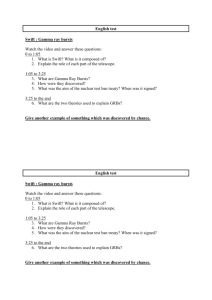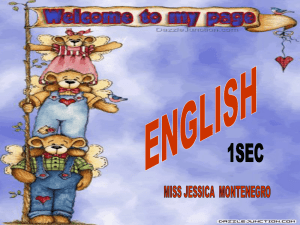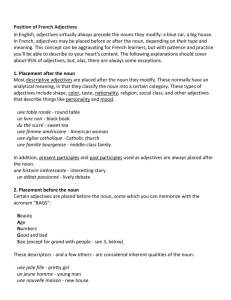15 - Light Bulb Languages
advertisement
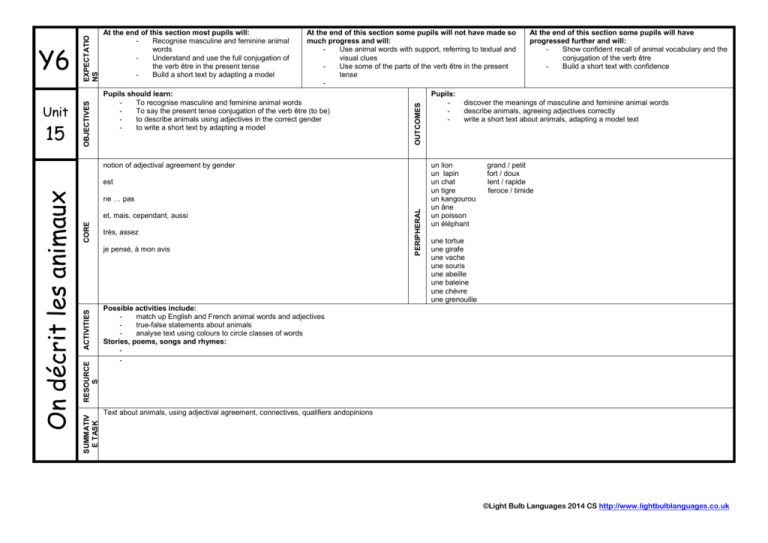
15 EXPECTATIO NS At the end of this section some pupils will not have made so much progress and will: Use animal words with support, referring to textual and visual clues Use some of the parts of the verb être in the present tense - Pupils should learn: To recognise masculine and feminine animal words To say the present tense conjugation of the verb être (to be) to describe animals using adjectives in the correct gender to write a short text by adapting a model OUTCOMES Unit OBJECTIVES Y6 At the end of this section most pupils will: Recognise masculine and feminine animal words Understand and use the full conjugation of the verb être in the present tense Build a short text by adapting a model notion of adjectival agreement by gender CORE et, mais, cependant, aussi très, assez RESOURCE S ACTIVITIES je pensé, à mon avis PERIPHERAL ne … pas SUMMATIV E TASK On décrit les animaux est Pupils: - At the end of this section some pupils will have progressed further and will: Show confident recall of animal vocabulary and the conjugation of the verb être Build a short text with confidence discover the meanings of masculine and feminine animal words describe animals, agreeing adjectives correctly write a short text about animals, adapting a model text un lion un lapin un chat un tigre un kangourou un âne un poisson un éléphant grand / petit fort / doux lent / rapide feroce / timide une tortue une girafe une vache une souris une abeille une baleine une chèvre une grenouille Possible activities include: match up English and French animal words and adjectives true-false statements about animals analyse text using colours to circle classes of words Stories, poems, songs and rhymes: - Text about animals, using adjectival agreement, connectives, qualifiers andopinions ©Light Bulb Languages 2014 CS http://www.lightbulblanguages.co.uk “I CAN” I can: Use my knowledge of cognates to discover some new nouns and adjectives Use être to describe animals Spot the difference between masculine and feminine adjectives Describe animals using appropriate adjectives Make sentences negative Analyse and understand a short text about animals Adapt a text to create my own text about animals Listening: Understand facts Understand familiar and routine language PoS Speaking: describe things orally communicate facts speak in sentences, using familiar vocabulary, phrases and basic language structures Reading: read carefully and show understanding of words, phrases and simple writing develop their ability to understand new words that are introduced into familiar written material understand facts in writing understand writing about familiar matters Writing: write at varying length (short sentences) describe things in writing write phrases from memory and adapt these to create new sentences to express ideas clearly Grammar: gender (nouns and adjectives key features and patterns of the language – making verbs negative using ne…pas, notion of adjectival agreement conjugation of high frequency verbs – être Language learning skills: explore how the patterns, grammar and words of the new language are different from or similar to English CAS 08/15 ©Light Bulb Languages 2014 CS http://www.lightbulblanguages.co.uk

